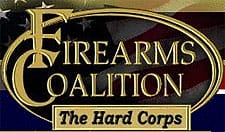The Great Ammunition Shortage of 2009: Part Deuce
by Jeff Knox

Phoenix, Arizona – -(AmmoLand.com)- Where has all the ammo gone? That’s a common refrain these days and not just in a few places, but all across the country. The answer is simple and complicated, but it’s not part of a nefarious plot hatched up by Washington politicians.
Ammo supplies got thrown out of kilter as a result of military action in Iraq and Afghanistan and several former Warsaw Pact nations transitioning to NATO caliber arms. Some sources of military surplus ammo have been drying up under a UN agreement to “de-militarize” (read destroy) surplus ammo rather than let it into the open market.
During the same period the costs of metals for components, particularly lead and copper, started climbing due to global demand. Ammunition prices, which have held remarkably low with little increase in decades, started going up. As prices crept up, many high-volume ammo users, such as police training ranges, fearing continuing price escalation and tightening supplies, decided to stock up. This put manufacturers, who were already a little behind the curve, even further into the hole. At this point there wasn’t really a shortage though, just an imbalance.
Industry sources say that the ammo was out there, but it was in the wrong places. Still, the news of these regional shortfalls spread and, even though manufacturers were ramping up their production, demand continued to empty shelves. The perception of a shortage became a self-fulfilling prophecy as consumers tried to beat the shortage by buying all they could find whenever they could find it. Some retailers actually began limiting purchases to no more than 4 or five boxes a day as a way to make sure more of their customers could at least get some.
Enter Barack Obama.
By last November, the ammunition supply was already stretched thin and the election of Barack Obama pushed it over the edge. November 5th, the day after the election, Internet search engines saw a huge spike in searches for “Barack Obama + gun control.” The results of those searches drove thousands of people into local gun shops all over the country to get that rifle, shotgun or handgun that they feared they might not be able to get once Obama got settled in and started getting laws passed. Naturally, along with the increased demand for firearms was an increased demand for ammunition – both from the new gun buyers and from folks concerned about the political and economic future of the country.
Many of these have moved into survivalist mode with bottled water, canned food, and as much ammunition as they can get their hands on. That group is growing, not shrinking, and has become a “black hole,” absorbing thousands of rounds of ammunition as soon as it rolls off the assembly line.
To counter the shortage ammunition manufacturers tell me they have been running at maximum production levels for months – 3 shifts, 24 hours a day, 7 days a week. Adding additional machinery would help, but that doesn’t make financial sense because once demand tapers off and supplies begin catching up, there will be no more need for the additional machinery. It is also worth noting that, just like the home reloader who might have just one press and several sets of dies, most manufacturers use the same equipment for loading a variety of different calibers. With demand outstripping supply, they are concentrating on the highest demand calibers, ignoring the less popular cartridges for the time being. When production finally catches up with demand, expect to see these most popular calibers come back first with .380, .41 Magnum, and .45-70 trailing along sometime later.
While there have been some rumors about import restrictions and other regulatory changes interfering with ammo supplies, so far none of those have proven to be true. The only detrimental action taken by the federal government to this point was a decision by the Pentagon to destroy once-fired brass rather than sell it to remanufacturers. That decision was quickly reversed before any brass was destroyed.
Eventually some people who have stashed cases of ammo – including some cagey resellers betting on price increases – will begin to think about prices coming back down and will decide to cash in before the bubble bursts. This will trigger an end to the shortage and a decline in prices in much the same way the shortage was originally created.
Or the economy will continue its downward spiral leading to runs on banks, a market crash and disruption of the food supply resulting in widespread hunger and food riots. If that happens, those of us with a basement full of Charmin, Spam, and 5.56 NATO are going to be sitting in the catbird seat.
About:
The Firearms Coalition — A Support Network for the gun rights activist.
